What Happens to Old Captains?
Topic: Humour
What Happens to Old Captains?
by Master Captain JP McManus, CD
From the CFB Gagetown "Junior Officers' Journal" July 1977
 There comes a time in the life of many Captains when it suddenly occurs that their peers and, in fact, many who are far, far junior, have been promoted to the dizzy heights of Major. One or two of these promotions are understandable because there is always a small percentage of clever individuals whom everyone realizes will be promoted quickly. Allowances are also made for the politically sound individuals who have been promoted because of good postings. For example, being PA to a General Officer, doing a good job and having a PER signed by him is very helpful. However, when several of these promotions occur it suddenly strikes home that something is amiss. With this realization comes a self appraisal, usually with some astounding conclusions. First and most important is the realization that he/she is as highly skilled as the people who have been promoted. Usually though, there are one or more large holes in his career progression pattern; a vital course that was missed or an essential job that was never held. In addition, there is also the realization that his postings have not been too good. Four years as the Recce Platoon Commander in an Airborne Commando may have been fun, but it did not do much for a career. When he realizes that he is now doing the same job that he did in 1972, and also in 1968, the Captain realizes that something is wrong.
There comes a time in the life of many Captains when it suddenly occurs that their peers and, in fact, many who are far, far junior, have been promoted to the dizzy heights of Major. One or two of these promotions are understandable because there is always a small percentage of clever individuals whom everyone realizes will be promoted quickly. Allowances are also made for the politically sound individuals who have been promoted because of good postings. For example, being PA to a General Officer, doing a good job and having a PER signed by him is very helpful. However, when several of these promotions occur it suddenly strikes home that something is amiss. With this realization comes a self appraisal, usually with some astounding conclusions. First and most important is the realization that he/she is as highly skilled as the people who have been promoted. Usually though, there are one or more large holes in his career progression pattern; a vital course that was missed or an essential job that was never held. In addition, there is also the realization that his postings have not been too good. Four years as the Recce Platoon Commander in an Airborne Commando may have been fun, but it did not do much for a career. When he realizes that he is now doing the same job that he did in 1972, and also in 1968, the Captain realizes that something is wrong.
The annual visit by the Career Manager is another milestone, especially when he says that the Captain's Regiment can expect only two or three promotions to Major in the next year.
All of these things usually come together at about the time the Captain has seven years in rank. With the realization that promotion is a very dim prospect, the Captain tries to figure out why he has not been promoted.
Odds are that he is an old man; at least 30 years of age. His ailments and old injuries are starting to become more important because they affect his work. No longer can he recover quickly from the effects of Happy Hours, Mess Dinners and impromptu parties.
He already knows that he is highly skilled in his profession, but his skill was gained by practical experience not formal training. Me also realizes that his staff work leaves something to be desired, he is short on tact, long on support for his soldiers, frustrated in his present job and generally disillusioned with the Army. Also important is the fact that he is unilingual. He is also committed to his profession by a sense of duty, a need for security and inertia. Also by the hope that next year will be his year for promotion.
Time, however, has a habit of creeping up on him. Before he realizes it two or three years have passed with no promotion and only horizontal job expansion. There he sits; able to do any job in his unit to at least one higher rank level. He is, in fact, a resource that the CO draws on when he wants a particularly complex, or sticky job done without having to personally supervise every step of it. Often the Captain fills a Major's position, doing the job without benefit of the pay or privileges that go with it.
Such was the case in early 1977 in 2 PPCLI. The Battalion had four Majors (including the DCO) and 10 Captains. The time in rank of six of these Captains ranged from seven to nine years. These six elderlyCaptains shared a disdain for Majors and outright hostility to Lieutenants. They were also veterans of the days when the Subalterns' Protective Society flourished. In addition, because of their age, they were regarded with some awe by the other junior officers and were permitted some leeway that the others did not have. Ever mindful of this these six Captains began to search for a method of protecting their positions. Mutiny was out of the question, so a more subtle method had to be found.
From this search developed the Master Captains' Association, an organization dedicated to the overthrow of Field Officers. After much discussion and soul searching, a list of membership criteria was developed, the main points of which are:
a. seniority in the rank of Captain equal to or superior to that of the junior member;
b. possession of at least two medals, one of which must be a CD;
c. a superior level of skill at one's profession;
d. hatred of subalterns;
e. disdain for Majors, particularly those younger than oneself; and
f. an undying belief in promotion "next year".
Membership carries certain privileges and responsibilities. First, and most important, is the fact that as a Master Captain one is too junior for command and too senior for responsibility. Next is the God-given right to call all Majors by their first names. There is also the privilege (and requirement) to wear one combat pip sewn to the underside of the left lapel of one service dress, and, in other orders of dress, to carry a combat pip at all times. Failure to produce it on the demand of another Master Captain costs a drink. Any amendments to the association constitution requires 100% concurrence, therefore members must leave their proxy vote with another member if they are away from their units.
The greatest responsibility lies in promotion. If, through some ghastly error, a member is promoted, he must bear the cost of a formal mess dinner for all the other Master Captains on his Base.
There are plans for the future also. Membership cards are a definite item, as is a modification to the Mess Kit. The old one, of course. Since all of us were fitted for it many years ago, there are now problems in getting into one's waist coat. The association intends to solve this problem by replacing the waist coat with a good quality T shirt, in the approved Regimental colour, bearing the logo (with appropriate MOC):

The initial intention was to limit membership to Combat Arms Officers, but this has been amended to permit select Corps types to join. Only if it is to the association's advantage, however. To keep the record straight, and for the sake of posterity, the charter members of the Master Captain's Association are:
- MCapt Doug Arril, PPCLI
- MCapt Bob Beggs, PPCLI
- MCapt Dave Brigden, PPCLI
- MCapt Gerry Jensen, PPCLI
- MCapt Pat McManus, PPCLI
- MCapt Gord Shields, Chap (P) just for class
- MCapt Woody Woodward, PPCLI
One other member has been added to this august group since its inception; MCapt Jim Van Dusen, Log; a fine old Mother Trucker. While at the Combat Training Centre recently I discovered that considerable interest in the association existed, with many officers wanting to join. Should this be the case with you, and you meet the criteria, please forward a written application outlining your reasons for wanting to join and a summary of your service to:
Chairman
Master Captain's Association
Kapyong Barracks
Letter Carrier Depot "M"
Winnipeg, Manitoba
R3N 0V9
Attn: MCapt JP McManus CD
A warning about applications. If they are too good you will be turned down because you are Field Officer material. And, finally, a word of hope for non - CD holders. Your application will receive especially favourable consideration if you "Failed CD".

Posted by regimentalrogue
at 12:01 AM EDT
Updated: Wednesday, 2 October 2013 12:23 AM EDT
 Walking Wounded, North Africa 1943
Walking Wounded, North Africa 1943 Napoleon Series Archive 2006 - Academy Sergeant Major J.C. Lord, MVO MBE
Napoleon Series Archive 2006 - Academy Sergeant Major J.C. Lord, MVO MBE 











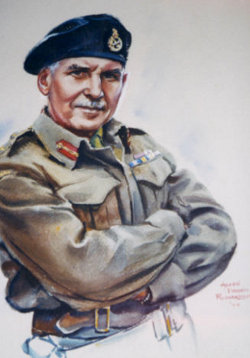 The following anecdote, from the biography of
The following anecdote, from the biography of  In a similar vein,
In a similar vein, 
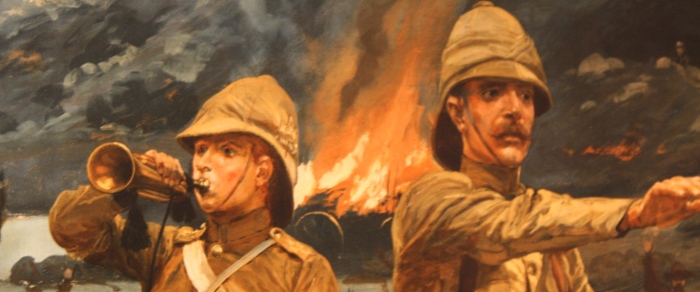

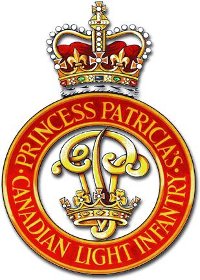


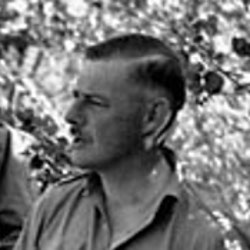



 Saluting the out-of-uniform Officer
Saluting the out-of-uniform Officer
 By Col. M.F. Gregg, Commandant, Officers' Training Centre
By Col. M.F. Gregg, Commandant, Officers' Training Centre

 Good afternoon, and congratulations on your appointment,
Good afternoon, and congratulations on your appointment, Balance reading on unconventional warfare with some of the older Cold War stuff, like "
Balance reading on unconventional warfare with some of the older Cold War stuff, like " For history, I'd suggest starting with the history of your own regiment. Then explore the campaigns and battles the regiment celebrates. Becoming one of the local experts in regimental lore is never a bad thing and it can take years to absorb and place in context the minutiae.
For history, I'd suggest starting with the history of your own regiment. Then explore the campaigns and battles the regiment celebrates. Becoming one of the local experts in regimental lore is never a bad thing and it can take years to absorb and place in context the minutiae. Challenge yourself occasionally, Pick up a book that stretches your reading level by its scholarly presentation, or even just the density of material. read them in small chunks and push yourself to digest complex material. One of my first tastes of this was Norman Dupuy's "
Challenge yourself occasionally, Pick up a book that stretches your reading level by its scholarly presentation, or even just the density of material. read them in small chunks and push yourself to digest complex material. One of my first tastes of this was Norman Dupuy's "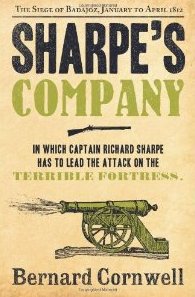 And don't ignore fiction. Fiction has the advantage of simplifying the scenario to just what the story needs. You can isolate and examine as you read and ask if you would have take the same decisions as the major characters.
And don't ignore fiction. Fiction has the advantage of simplifying the scenario to just what the story needs. You can isolate and examine as you read and ask if you would have take the same decisions as the major characters.  There comes a time in the life of many Captains when it suddenly occurs that their peers and, in fact, many who are far, far junior, have been promoted to the dizzy heights of Major. One or two of these promotions are understandable because there is always a small percentage of clever individuals whom everyone realizes will be promoted quickly. Allowances are also made for the politically sound individuals who have been promoted because of good postings. For example, being PA to a General Officer, doing a good job and having a PER signed by him is very helpful. However, when several of these promotions occur it suddenly strikes home that something is amiss. With this realization comes a self appraisal, usually with some astounding conclusions. First and most important is the realization that he/she is as highly skilled as the people who have been promoted. Usually though, there are one or more large holes in his career progression pattern; a vital course that was missed or an essential job that was never held. In addition, there is also the realization that his postings have not been too good. Four years as the Recce Platoon Commander in an Airborne Commando may have been fun, but it did not do much for a career. When he realizes that he is now doing the same job that he did in 1972, and also in 1968, the Captain realizes that something is wrong.
There comes a time in the life of many Captains when it suddenly occurs that their peers and, in fact, many who are far, far junior, have been promoted to the dizzy heights of Major. One or two of these promotions are understandable because there is always a small percentage of clever individuals whom everyone realizes will be promoted quickly. Allowances are also made for the politically sound individuals who have been promoted because of good postings. For example, being PA to a General Officer, doing a good job and having a PER signed by him is very helpful. However, when several of these promotions occur it suddenly strikes home that something is amiss. With this realization comes a self appraisal, usually with some astounding conclusions. First and most important is the realization that he/she is as highly skilled as the people who have been promoted. Usually though, there are one or more large holes in his career progression pattern; a vital course that was missed or an essential job that was never held. In addition, there is also the realization that his postings have not been too good. Four years as the Recce Platoon Commander in an Airborne Commando may have been fun, but it did not do much for a career. When he realizes that he is now doing the same job that he did in 1972, and also in 1968, the Captain realizes that something is wrong.

 It is clear that Smith performed well as a soldier of the 1st Battalion. By the spring of 1916, he would be awarded the
It is clear that Smith performed well as a soldier of the 1st Battalion. By the spring of 1916, he would be awarded the